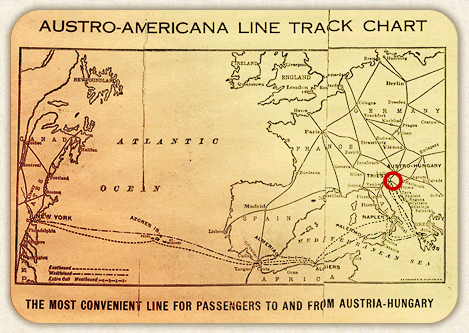 |
Ljubljana, the capital of the former province of Carniola within Austria-Hungary, lies along the Vienna-Trieste railway. Its German name was Laibach. After the 1895 earthquake, it developed into a modern urban centre that did not lag behind similar towns of the then Central Europe. If Ljubljana had in 1880 30.505 inhabitants, twenty years later there were as many as 41.727. Apart from Slovenes, German-speaking inhabitants also lived there. During the times of mayor Ivan Hribar (1896-1910), the town was being given a more and more Slovene image, for example with street signs, signboards above shops and similar. On postcards as well, Slovene texts were besides German more frequent. The town was at that time an important railway centre through which numerous emigrants from the Balkan states and Central Europe travelled towards the Atlantic harbours and Trieste. Many Slovenes were among them. At that time, Ljubljana had – particularly its Kolodvorska ulica (Railway Station Street) - a cosmopolitan image where people of different citizenships and languages mingled, townspeople mixed with people from the outskirts, for example barrow women with peasant products; besides upright people not so few were dishonest, which caused the municipal authorities a great deal of troubles. However, never before nor later had Ljubljana been so closely connected with the world as it was at the turn of the 19th century, in the time of mass emigration, which was oriented mainly towards the United States of America.
Postcards, photographs and archival documents are from the beginning of the 20th century.
|

